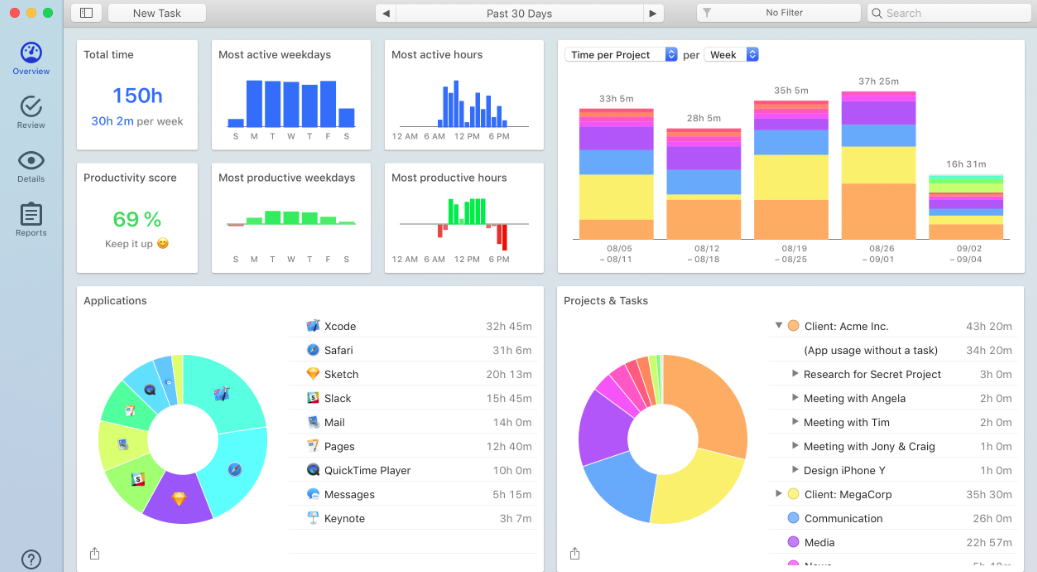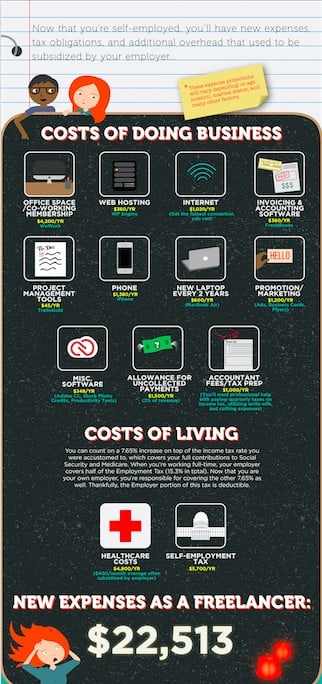How to Re-Sign (& Renegotiate) Client Contracts

It’s that time of year again. And no, we’re not talking about holiday spirit or next year’s resolutions (though if you want to read about planning ahead for the upcoming year, check out our article on New Year’s Resolutions).
We’re talking about another kind of planning—the kind that pertains to companies of all sizes and shapes. We’re talking about budgeting.
If you are a freelancer, your clients are likely busy putting together projections, goals, and contracts for the coming year.
As a vendor, your services are currently being evaluated and discussed. Even if you are lucky enough to have a contract signed with a particular client that covers you for future months, your performance and value are still being weighed against operational costs.
It’s the natural cycle of business—as 2024 wraps up, plans to have a more successful (read: profitable) year in 2025 are set into motion.
That’s why it’s important to get ahead of the game, get your data together, and discuss contracts with your clients.
Table of Contents
TOC
Types of Contracts
First, let’s cover the contracts you may (or could) have with clients. It might be time to upgrade to a different kind of agreement, so it’s always nice to have a refresher.
Project-Based
Maybe a client needs help building out a new website, but doesn’t require ongoing tech support. Or perhaps they are rolling out a new campaign and need your wordsmithing skills for marketing copy, social posts, or a relevant blog.
Whatever the case, project-based relationships are usually focused around one task or larger overall project. It may be for a set amount of time, or with a more lenient timeline until the project is complete—either way, it’s important to make sure the scope of work is clearly defined.
Project-based work is beneficial if you have certain months of the year when your income dips. These contracts are great to use to supplement revenue. But if you’re unsure when a project will pop up (unless your client gives you an idea based on their annual plan), they can be a little unreliable.
Hopefully your project-based clients provide you with consistent work, but it can be unpredictable and frustrating at times.
Retainer
Securing a retainer contract can feel like hitting the motherlode—just so long as it’s not abused on either side.
A monthly retainer is when you and your client agree upon a set amount of money to be paid every month for a somewhat-agreed-upon amount of work. Usually being on retainer means you’re on call to do whatever is needed, but of course there need to be some boundaries.
A retainer offers a solid understanding of how much income you’re gathering from that one client in a given month/quarter/year. For a freelancer, dependability is as good as gold, which is why a retainer tends to be the most attractive contract option.
With a retainer, it’s important to remember two things:
1) Your client is putting a lot of upfront trust (and money) into you, so it’s best to not get too pushy if the hours you’re putting in are a little more than you expected. Especially because…
2) You’re expecting to get this amount even if you and client both have a slower work month, right? So keep in mind that the workload will likely ebb and flow—it should all wash out in the end.
Again, retainers are wonderful because they offer some form of security. However, it’s a good idea to know exactly how much time you’re putting in so you don’t get taken advantage of. It also gives you great leverage when you’re trying to renegotiate a higher retainer (thankfully for you, that’s where Timing comes in).
Billing Actuals
‘Billing actuals’ sits between project-based and retainer. It’s not locked into a certain task but also isn’t a guaranteed amount.
Say your client needed help developing that website, but decides they also need ongoing tech support to fix bugs, update coding, and keep things running smoothly. If they don’t go for your pitch of a retainer agreement, they may ask you to stay on to do whatever needs to be done and then have you bill for your actual hours.
This way you are being paid for the work that’s being done, but they aren’t paying a set amount every month if there are fewer issues to solve.
Billing actuals can feel a little less steady, but it’s also nice to be compensated for the hours being put in. Plus, it’s up to you to agree on an hourly rate with the client.
You know what else is absolutely paramount to this kind of contract? Time tracking. And you know who takes the manpower out of time tracking so you can spend more time putting in billable hours? Timing.
Which brings us to…
Evaluating Your Existing Contracts
Your approach to assessing your current agreements with clients will depend on the type of contract you have with them. In any case, using a contract amendment template might make it easier for you to propose changes to the contract.
However, what is true across the board is something that is crucial for freelancers and often overlooked by full-time employees: You must log your time.
If you aren’t, how do you know if you are over-servicing a client? In the event that they think you may actually be under-servicing them, how do you dispute that?
Don’t wait until the end of the week, month, or year to try and tally up all the time you’ve spent working for a client. Not only will that be laborious and take you painfully long, but also it’s not going to be accurate.
Don’t wait until the end of the week, month, or year to try and tally up all the time you’ve spent working for a client. Share on XUsing time tracking software like Timing is the only way to take that important responsibility (and worry) off your shoulders. Timing automatically tracks your time within documents, programs, and on websites, and organizes it according to the folders and rules you implement.

Plus, it makes it easy to enter manual time (for phone calls or work spent away from your Mac) and allows you to easily pull reports to show a client how much time you’ve spent on a specific task or project. Remember, they aren’t subject experts—you are—so they might not realize how time-consuming an assignment can be.
Not only does tracking your time help you defend your worth, but it can also be incredible evidence for why a contract should increase in value.
Have you given the client X% more in work over the past 6 months? Being able to back that up with data that you’ve been collecting (and hopefully sharing with them) along the way is a great way to make your argument for a higher rate or retainer.
Understanding Your Value
Although it’s critical to know the amount of time you’re putting toward a client, it’s also important to know what that time is worth.
If you’re just starting out, or recently left a full-time role to freelance, it can feel like you are throwing out an arbitrary number for your hourly rate.
Some may say to take your desired income and divide that by 52 weeks, then divide it again by 40 hours a week. But, as a freelancer, you also have overhead and other expenses (like paying for your own benefits) to consider now.
That’s a lot to think about, but this helpful article by creativeLIVE breaks it all down: Infographic: How to Calculate Your Freelance Hourly Rate

Source: www.creativelive.com
This is a great exercise to get a sense of what’s typical in your market, but it’s also smart to do some research.
A quick Google search gives a rough estimate of what someone with your experience and skills might charge. Websites like GlassDoor can provide a glimpse into what some companies are paying contract employees with a similar title. Other sites like PayScale can help you gauge the norm in your area.
Another great source to leverage is the community of people around you! If you have a friend or former colleague whom you feel comfortable talking money with, ask them their thoughts.
Even if they aren’t in a similar position as your own, it’s likely that their company outsources to freelancers, so they may be able to provide you with a range.
Final Thoughts
Proving the time you’ve spent delivering great work to a client and knowing your worth are the two great pieces of ammo when looking to re-sign or renegotiate a contract. However, there is one other factor.
Regardless of how much expertise you provide, the client still has to recognize that they continue to need that expertise.
The best way to provide a solution is to identify a problem, so don’t be afraid to (politely) point out things that could be improved. Perhaps their website isn’t properly tracking analytics, or maybe their SEO strategy could use a facelift. Social engagement down? We bet we know someone who could take care of that (looking at you).
Be assertive, be respectful, and be confident in your abilities!
